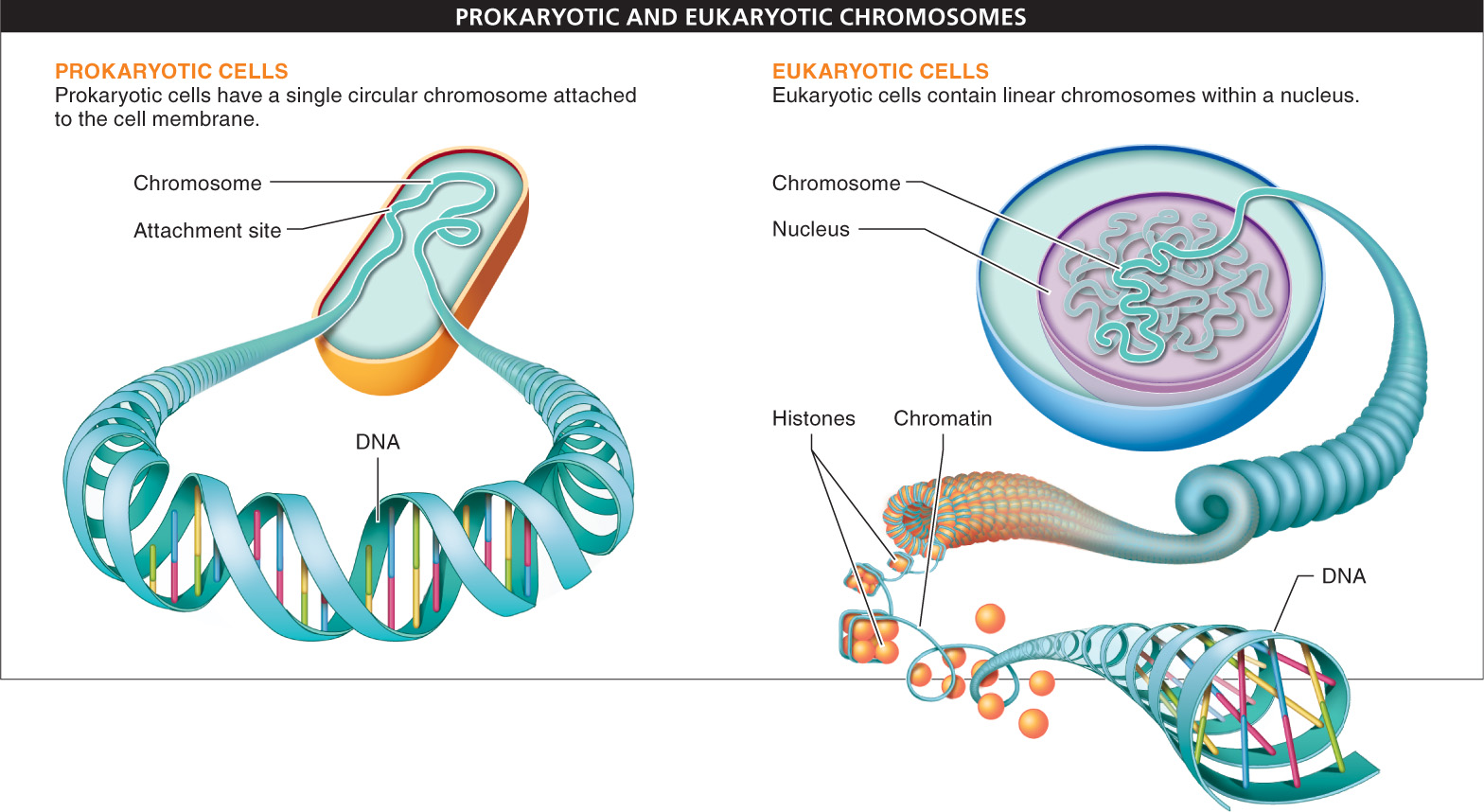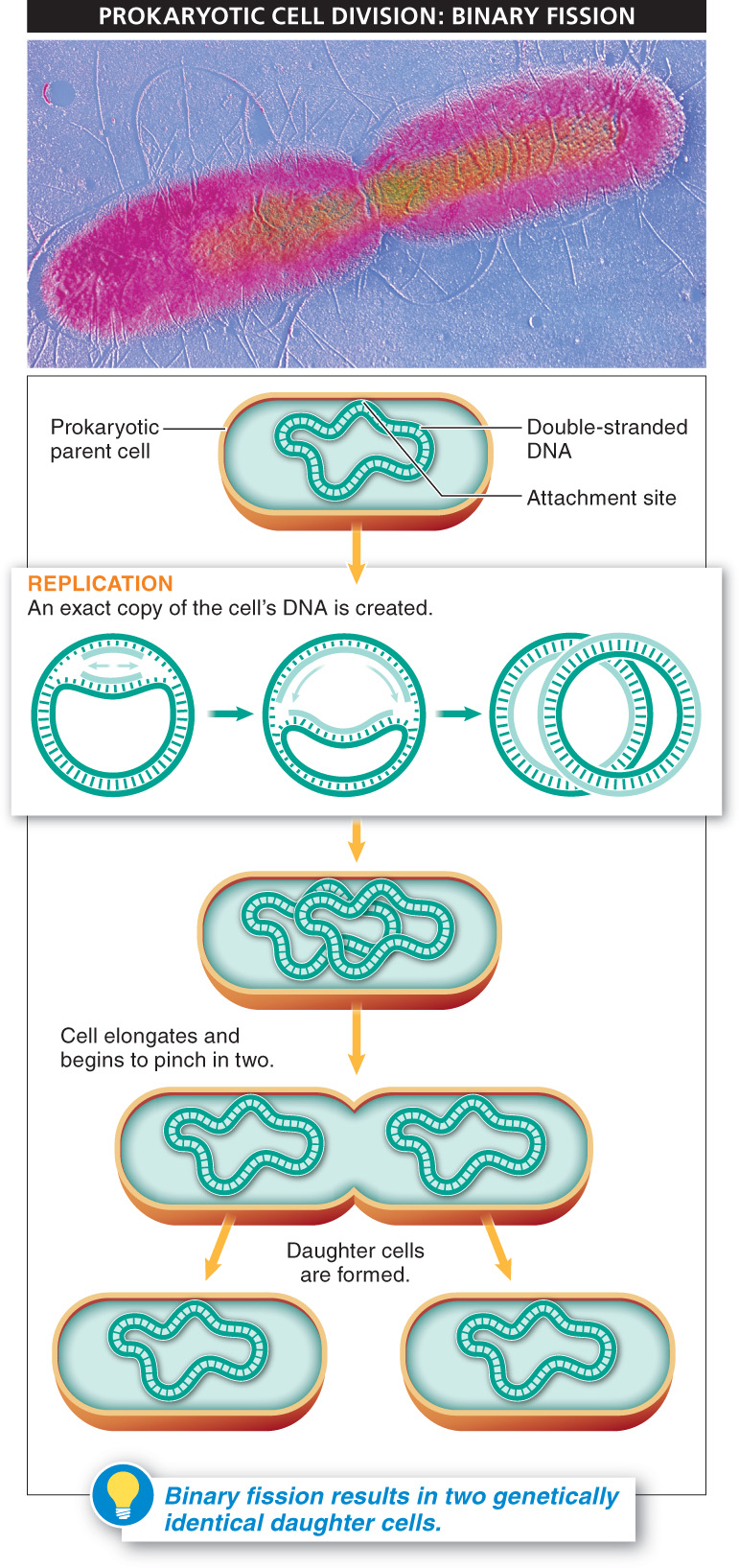As a method for storing genetic information, DNA has complete market saturation. All life on earth uses it. This is pretty remarkable considering the tremendous diversity of life that exists on our planet—


The most important part of a eukaryotic chromosome may be the DNA molecule, which carries information about how to accomplish the processes needed to support the life of the organism. But eukaryotic chromosomes (and some prokaryotic chromosomes) are made of more than just DNA. The eukaryotic chromosome is composed of chromatin, a linear DNA strand bound to and wrapped tightly around proteins called histones, which keep the DNA from getting tangled and enable it to be tightly and efficiently packed in an orderly manner inside the nucleus. Plants and animals usually have between 10 and 50 chromosomes (although there are species with as few as 2 and others with more than a hundred).
Most prokaryotes—
Replication in prokaryotes begins as the double-
5
The two newly created circular chromosomes attach to the inside of the plasma membrane at different spots from each other. The original cell, called the parent cell, then pinches in until it divides into two new cells, called daughter cells. Each of the daughter cells has an identical two-
In some prokaryotes, such as the bacteria called E. coli that live in our digestive system, the complete process of binary fission can occur very quickly—
TAKE-HOME MESSAGE 6.2
In most bacteria and archaea, the genetic information is carried in a single, circular chromosome, a strand of DNA that is attached at one site to the cell membrane. Eukaryotes have much more DNA than do bacteria and organize it into linear chromosomes within the nucleus. Bacteria divide by a type of asexual reproduction called binary fission: first, the circular chromosome duplicates itself, then the parent cell splits into two new, genetically identical daughter cells.
What are the key differences between prokaryotic and eukaryotic chromosomes?
Prokaryotes have a single circular chromosome that is attached at one site to the cell membrane, whereas eukaryotic cells have free-floating linear chromosomes within a cell nucleus. The eukaryotic chromosome is made up of chromatin, a linear DNA strand that is bound to and wrapped around histones, which are proteins that keep DNA from getting tangled and enable it to be packed inside the nucleus in an orderly way.
6